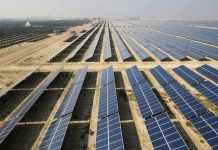ISLAMABAD: Rebasing leads to Pakistan’s debt-to-GDP ratio drop, WealthPK reported.
Mounting debt has always been a serious challenge to the Pakistani economy, hindering sustainable growth.
However, there is a silver lining in the horizon as recent data shows that the debt-to-GDP ratio has recorded a decrease from last year – indicating strengthening of macroeconomic conditions.
On January 20, 2022, the National Accounts Committee had approved the rebasing of the Gross Domestic Product from 2005-06 to 2015-16.
The rebasing was done to ensure the national income accounts reflected the current price levels in the economy. It painted a more accurate picture in terms of where the economy was standing.
The rebasing resulted in an improvement in the size of the Pakistani economy from $296 billion to $346.76 billion. As a result, the growth rate was also revised from 3.94% to 5.40% – which is the highest in the past 14 years.
Federal Minister for Finance and Revenue Shaukat Tarin has said that after the rebasing of the national income accounts, the gross public debt, which consists of the government’s domestic and external debt including from IMF, has decreased as a percentage of the GDP.
The previous estimates placed public debt of the government at 83.5% of the GDP, but the revised figure shows a decline of 16% – at 71.8%.
However, in absolute terms, the government debt has increased as Pakistan has to keep borrowing for debt servicing and financing fiscal and current account deficits.
Moreover, the increase in borrowing needs can also be attributed to the pandemic, which has resulted in an increase in healthcare expenditure, especially on purchase of vaccines.
Provisional figures released by the State Bank of Pakistan showed the government’s debt standing at Rs42,394 billion at the end of January 2022 against Rs36,545 billion in January 2021 – showing an increase of 16%.
At the end of June 2021, the central government’s total debt stood at Rs38,699 billion against Rs35,107 in the same period of the corresponding year.
The government’s external debt increased to Rs14,982 billion at the end of January 2022 against Rs12,034 billion in January 2021. On the other hand, the long-term borrowing of the government has also recorded a growth of 15% from January 2021 to January 2022, according to WealthPK.
However, the Federal Board of Revenue has also recorded a growth of 30% year-on-year in tax collection during July-Feb 2022 period. Pakistan has also increased social spending to mitigate the impact of the coronavirus pandemic on the poor people.
INP






